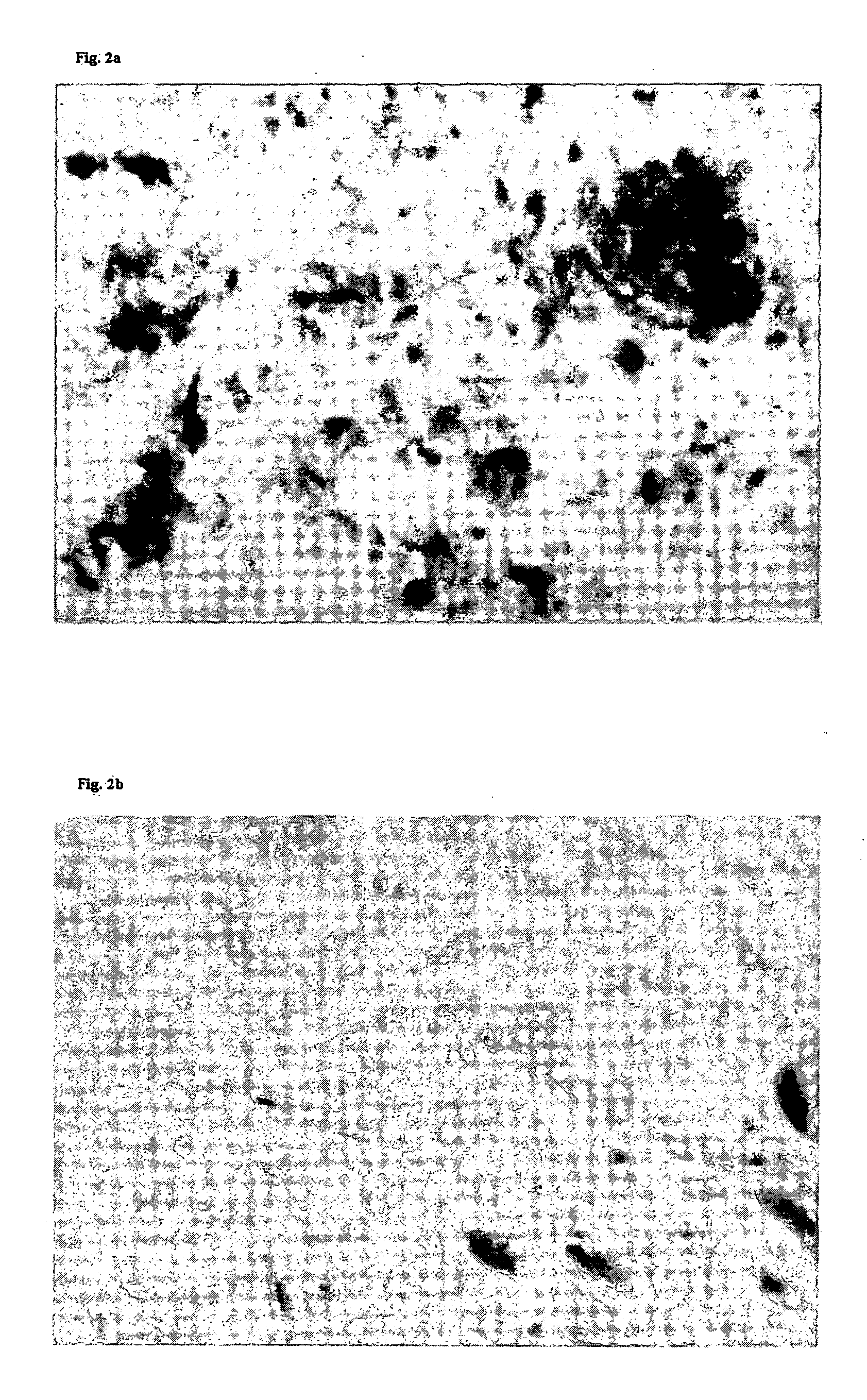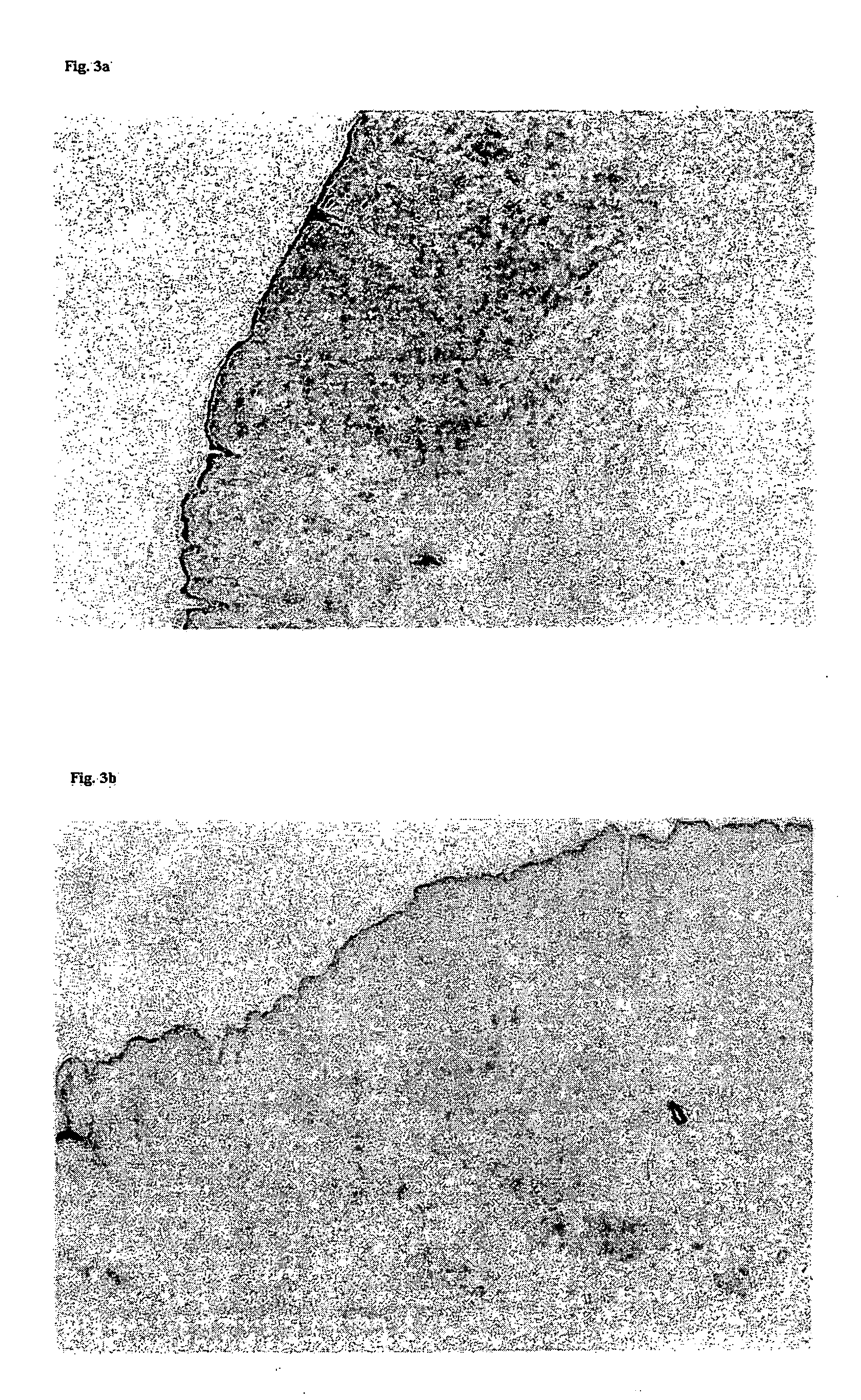Agent for reduction of scar formation by using wound alkalinization
- Summary
- Abstract
- Description
- Claims
- Application Information
AI Technical Summary
Benefits of technology
Problems solved by technology
Method used
Image
Examples
example 1
[0028] In the wound healing process of an adult white rat, it was histologically studied whether the alkalinization of the wound reduces the scar formation, and it was indirectly confirmed whether such a reduction is caused by TGF-β inactivation, by observing differences of scar formation depending on the action of TGF-β between the alkalinized wound and the control wound.
Materials
[0029] Animal: forty white rats of Sprague-Dawley origin, which weigh 300-350 mg
[0030] bovine TGF-β[0031] 0.1 mEq sodium bicarbonate
Methods of Experiment
A. Experiment of Wound Alkalinization (Twenty White Rats)
[0032] On the dorsum of adult white rats, skin near the limbs which are on the same distance from the median line was incised in about 10 mm long. In a sham control group, 0.1 cc distilled water was injected to the dermis of the incised wound and simply sutured. In a test group, 0.1 mEq sodium bicarbonate 0.1 cc (pH 9.5±0.3) was injected to the dermis of the incised wound. [0033] a. control×...
example 2
[0046] This working example was carried out in accordance with the same manner as described in EXAMPLE 1 but using NaOH or KOH instead of sodium bicarbonate as an alkalinizing agent. This experiment is for the purpose of showing that the reduction of scar formation illustrated in the EXAMPLE 1 resulted from the alkalinization of wound site conditioned by sodium bicarbonate, rather than the activity of the sodium bicarbonate per se.
Materials
[0047] Animal: twenty white rats of Spraue-Dawley origin, which weigh 300-350 mg [0048] 0.231 mmole NaOH (pH 9.5±0.3) [0049] 0.249 mmole KOH (pH 9.5±0.3)
Methods of Experiment
A. Experiment of Wound Alkalinization (Ten Animals for NaOH, Ten Animals for KOH)
[0050] On the dorsum of adult white rats, skin near the limbs which are on the same distance from the median line was incised in about 10 mm long. After incision, the control group was simply sutured. In test groups, 0.1 mEq NaOH or KOH 0.1 cc (pH 9.5±0.3) was injected to the dermis of the...
PUM
| Property | Measurement | Unit |
|---|---|---|
| Volume | aaaaa | aaaaa |
| Composition | aaaaa | aaaaa |
| Concentration | aaaaa | aaaaa |
Abstract
Description
Claims
Application Information
 Login to View More
Login to View More - R&D
- Intellectual Property
- Life Sciences
- Materials
- Tech Scout
- Unparalleled Data Quality
- Higher Quality Content
- 60% Fewer Hallucinations
Browse by: Latest US Patents, China's latest patents, Technical Efficacy Thesaurus, Application Domain, Technology Topic, Popular Technical Reports.
© 2025 PatSnap. All rights reserved.Legal|Privacy policy|Modern Slavery Act Transparency Statement|Sitemap|About US| Contact US: help@patsnap.com



